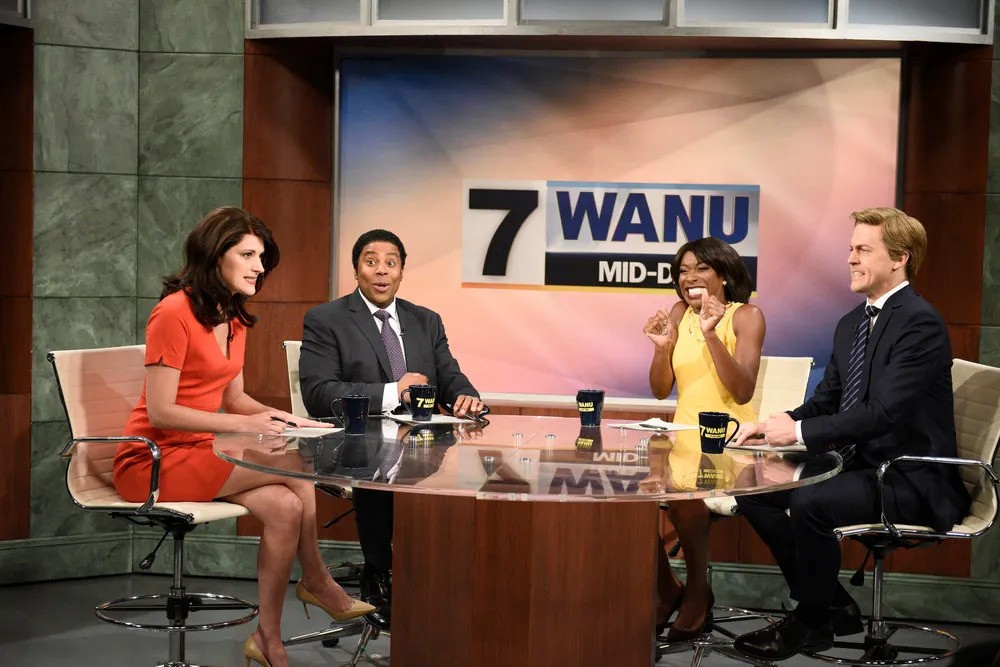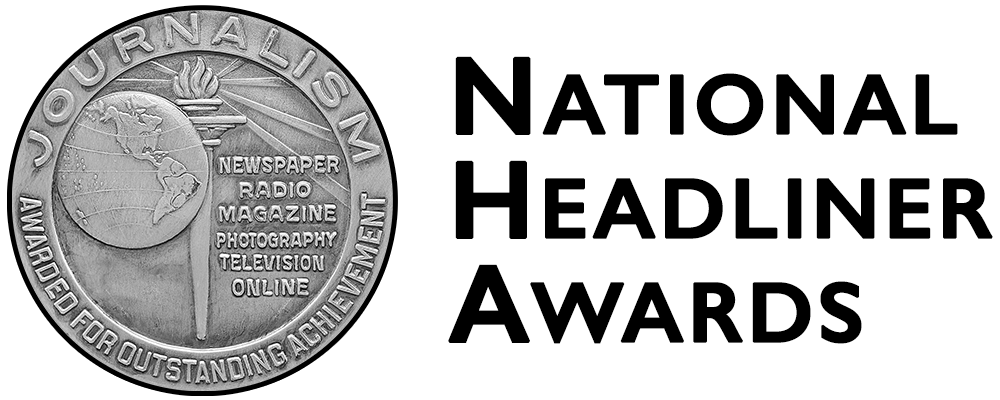SMALL-MARKET CORDILLERA THINKS BIG
Many broadcasters may still be agonizing about how to use their digital channels, but not Terry Hurley.
For the president of Cordillera Broadcasting, digital is all about high-definition television. It’s the “killer app,” he says.
Within the next few weeks, the group will begin offering local HD news at its largest stations—WLEX Lexington, Ky. (DMA 63) and KVOA Tucson, Ariz. (DMA 70). And HD news at the group’s smaller markets is just a matter of time.
In addition to Lexington and Tucson, Cordillera, a division of the family-owned Evening Post Co. of Charleston, S.C., operates major network affiliates in Colorado Springs, Colo. (DMA 94); Santa Barbara, Calif. (DMA 122); Lafayette, La. (DMA 123); KRIS Corpus Christi, Tex. (DMA 129); and four stations in Montana (DMA 168 and smaller).
It also operates CW and Telemundo affiliates in several of the same markets on low-power or digital stations.
In this interview with TVNewsCheck Editor Harry A. Jessell, Hurley talks about HD, discusses the small market/large market schism in broadcasting, argues for loosening restrictions on owning two stations in the small markets, says he is preparing to pursue retrans dollars and reaffirms his company’s commitment to broadcasting.
And edited transcript follows:
I’m going to start with the same question I asked Liz Burns [of the Morgan Murphy Stations]. How does the small-market TV business differ from the larger market business?
I thought you were going ask why Liz and I both live in Duluth.
I see small and medium as being very similar. I do see a distinct difference between large market and medium. The cost of entering, obviously, is markedly different. Ongoing operation costs are markedly different and it takes a different mind set to play effectively in those sized markets. When you start talking about helicopters and 140-person newsrooms and 250 employees, it changes everything.
When you’re talking about 50 people in a small-market television station or 100 in a medium, that seems to be a scale that at least we’re comfortable with. I would have a difficult time envisioning us in any market bigger than 50.
I guess what I’m really asking is do you think you have a different regulatory agenda in Washington?
Yes. I’ve been running small-market television groups since 1996 and the differences have never been more apparent than now. The networks and the other large groups seem to have pretty much abandoned participating in some of the regulatory issues. Obviously, ownership issues would be the key ones.
There’s seems to be a little bit of teeth left in the fight for crossownership because of the newspaper component, but as far as legalizing duopolies, the small markets and medium markets seem to be the only ones that are concerned about that at this point.
I thought it was a real significant sign when CBS followed NBC’s lead and started selling off its smaller markets television stations.
It’s easy for the networks to say we’re in the same industry, we’re in the same station business as you are. I’ve heard that a number of times from the networks. Well, they’re not in the same business as me if they’re in New York with two stations and I’m in Tucson with one.
It’s just very different and that’s disconcerting. I’m not condemning them for not being with us, but it’s just unfortunate that we don’t have their club with us.
And you’re not talking about just the networks. You’re talking about all those groups that live in the medium markets where you can do duopolies.
Exactly. We are working that small-market group that Liz, [Barrington’s] Jim Yager and [Raycom’s] Paul McTear are a part of to try to get the changes we need.
How optimistic are you about small-market duopoly with the Democrats back in charge and no real help from the big boys?
Let’s just say that if the next elections go as the pundits are predicting, we’re going to be in this battle for a long time. I agree that the current political climate does not bode well for any regulatory change in terms of ownership, but that doesn’t mean that we still shouldn’t try to get it done.
Why not take the virtual duopoly route that Schurz has in Springfield, Mo.? Instead of changing the rules, you can get a third party, set them up as the owner of the license, come in behind them and manage the station.
Obviously, I’m aware of how to do it. I personally live in a market where Granite has the CBS, the NBC, the My Network TV and the CW.
We have spent many hours with our Washington attorneys and I’ve had friends send me templates and I know that we could do it. But I think that we’d like to at least feel that we attempted to try to get the rules changed. Then, if that fails, at some point, I’m sure we’ll jump on the bandwagon.
Given the differences between broadcasters in different markets, do you think that there’s a need for a separate organization for small-market broadcasters?
I do and I know that might not be politically savvy and that might not be the current prevailing mood. I’m only speaking for myself. I’m not speaking for any of the other members of the coalition, but I would be in favor of that. I have to credit [NAB President] David Rehrs’ communication efforts since he’s taken the job. I do get a sense of renewed inclusion among the smaller market groups, but I don’t see how it could hurt.
You’re owned by the family-owned Evening Post company in Charleston, S.C. Are they in this business for the long-term?
We have only sold two television stations since 1985. We sold the CBS in El Paso years ago because of changes in the tax laws in ’86 and then in 2001 we sold an ABC affiliate in Boise [Idaho] to Doug Keil and the people at Journal because they owned a number of radio stations in the market.
When I joined this company in the middle of 2001, it became apparent that the people who were at the top of the heap in terms of ratings and viewership were the people who would be able to weather the storms.
Boise was the one station we owned that wasn’t either No. 1 or No. 2 in the ratings and so we sold it.
This is a family-owned company and they have been in media business since the 1920s. I don’t think there’s a longer term player in the industry at this point.
What about pushing into some new markets with some acquisitions?
We bought one as recently as ’05. When major groups go on the block, that’s just not something we’re comfortable with. But we’ve got the wish list that everybody else does—growth markets, No. 1 or No. 2. If those become available on a one- or two-station basis, sure. We look at those all the time.
In other words, you’re not bidding for Clear Channel Television, but you may be interested if the buyer decides he wants to spin off some stations.
If they do spin off some stations that are good strong stations that are in good markets, we would certainly be interested. We have a couple of meetings at NAB coming up to talk about potential acquisitions so we haven’t given up on television.
We’re in the newspaper business, too, and newspapers have their own unique set of challenges at the moment. I would think that, if we were going to acquire anything in the short term, it would be on the broadcast side.
You mentioned that you don’t want to be the third- or fourth-rated station in a market. I hear that that is a very tough business now. Is it?
I think that’s very true, but it’s only true when you factor the cost of news into the equation. It’s very difficult when you’re a No. 3 or No. 4 in any market smaller than 75 certainly to make a lot of money on news product. If you’ve got high news costs, obviously, it drives your margin down and if your margin’s down, the equity guys don’t like that. So it is very difficult to be a growth business if you’re 3 or 4 with the high cost of news.
Now, if you’re 3 or 4 in one of those markets and you are able either to lay off your news cost on a partner in the market or you don’t have news, then it’s a viable business, but it’s on a smaller scale. You you have to be willing to take less revenue accompanying those smaller expenses.
What is the Montana Television Network?
That’s our effort to centralize a number of operations in Montana. We own stations in every metro in Montana and they are all CBS affiliates. We centralized the network and syndicated programming. We do that out of a renovated old train station in Butte. We also have some centralized traffic functions.
What we did was take the expense money that we were able to save through efficiencies and put it back into news and promotions and it’s paid off very well.
Three out of the four stations out there have at least 40 shares in news.
We’ve just bought a new building in Bozeman, which is one of the fastest growing cities in the country, and we’re building a new studio there and launching a couple of statewide newscasts. We like Montana. It’s just been a great market for us.
What about Tucson? That sounds like it should be a healthy market, too.
Yeah. I was in Tucson recently on a station visit and they had just announced that they had reached a million people in the metro area four years earlier than projections. It just seems to not stop. The growth in Tucson just keeps heading north up the I-10 corridor toward Phoenix.
It’s also a tough market. It’s one of the smaller markets in the country that has a legal duopoly. Belo has two stations there and Journal and Raycom have the other major affiliates.
When I was interviewing for this job with Andy Anderson, who’s the president of our holding company, he said, “We don’t want to buy anything where people don’t want to live.” I thought it was a little simplistic at the time, but, in retrospect, it’s proven to be some of the best advice I’ve heard.
How are you dealing with the Web?
We’ve got a pretty strong Web presence in all of our markets and it’s been lucrative for us since 2002 working with World Now. Last year, we formed a new digital division and we’ve added at least 10—maybe as many as 15 people—at the stations and in Charleston to further new media.
We’re just trying to take the long view on new media. We think that our station Web sites are great. Our primary focus is going to be brand extension and to help us become a primary provider of news in each market, but then we think like a lot of other people that there are a ton of other opportunities in new media. The job of the new division is to source them and see if they fit into our profile. They’ve been very busy and it’s been exciting for the last year or so.
Are you interested in retrans revenue and as a small-market broadcaster are you in a position to get it?
Obviously, we read the trades and we talk to people in the industry and we hear and read about some real serious numbers being thrown around in terms of anticipated retrans dollars.
I had hoped that ADS [satellite TV] would take a larger bite out of the cable industry, but it seems to have plateaued. But in markets where we might have 25% ADS penetration—Montana or Lexington—we’ve got some pretty good leverage and it’s no secret that that the ADS providers have paid for our signal.
When it comes time to negotiate the next time around, we think that we’re going to be in a pretty good position with HD news and market leadership as far as local news is concerned. So, we think that retransmission compensation is viable. We think it’s real. But, like everybody else, we just don’t know how much it’s going to be.
So it’s really not so much a function of small market/big market as it is the degree of ADS penetration?
And what kind of news ratings you have.
We’re a little bit concerned with the current discussions in Washington. It seems that we enacted this retransmission rule to let the market determine what’s fair. But now that the pendulum seems to be swinging to the broadcasters’ side, the cable industry thinks it’s time to redo the rules. We don’t quite think that that’s fair.
That’s one of the two or three issues in Washington at the moment that is a hot button.
What are the other two?
Well, for us, obviously, it’s duopoly and we talked about that. The other is indecency. I’m a little nervous about what’s going to happen with the Congress over the next couple of years in decency.
We still don’t know what’s legal and what’s not legal and I just wish that we could get something resolved so we would know what we’re doing.
I’ve currently got four stations in Montana that were fined for Without a Trace. That’s substantial money even under the old rules. That’s $32,500 times four for something that we didn’t, obviously, have much input in. I’m also a little mystified why we’ve got a couple of networks that indemnify us and some that don’t. They all need to indemnify or we need some clear cut rules.
Who indemnifies and who doesn’t?
I believe Fox and NBC indemnify at this point.
Unfortunately, the one that you got you in trouble [CBS] does not.
Yeah.
So who’s your complaint with—the networks or with Washington?
I can’t blame the networks. They never had to indemnify us before. I certainly don’t blame them for not sticking their necks on the chopping block. So let’s just get something done in Washington.
The courts may rescue you.
Well, we’re hoping. Another issue I’m a little bit concerned about is making sure that the cable companies don’t downgrade our digital signal.
The downconversion issue does seem to be heating up.
I haven’t chosen to get too involved in that, but I’m a little bit concerned about that when the switch gets flipped.
Now, you’ve mentioned three or four things related to Washington and multicast must carry is not among them. Is that not a big deal for you?
We decided two years ago that high definition was the killer app. We decided that high definition, not multicast channels, was the best utilization of our digital spectrum.
So, yes, I’m concerned about multicast must carry from an industry standpoint, but, from our company standpoint, degradation of our signals is more critical because we plan on being HD in all our markets sooner rather than later.
I wanted to ask you about that. You have said that you are going to start offering HD news in Tucson before the May sweeps right?
Right. And Lexington, too.
And you’ve offering the hybrid variety—full HD from the studio and upconverted SD from the field?
Yes. It’s the same thing that a number of people are doing. I know our competitor in Lexington has mentioned that it’s going full HD.
That is what Gray is saying in Lexington. Doesn’t that put the pressure on you to do HD acquisition there too?
I don’t know, but it’s something that you can’t really ignore.
When we were done with digital, which was a huge expense, automation came along and the cost of automation is significant. Then, the [Panasonic] P2 cameras came along and that was significant. Now, HD news is coming along.
The capital costs in television, which are already high, seems to have entered a new stratosphere. So, I don’t know if we will go to HD acquisition right away, but I don’t envision that we’ll wait too long.
What about HD in your other markets?
I would say sooner rather than later—three years.
Three years you’ll have the group done?
Yes. That’s the goal.
Can you tell me what markets are going to go HD after Tucson and Lexington?
No, I can’t.
You don’t want to alert your competitors.
No, I don’t.

























Comments (0)